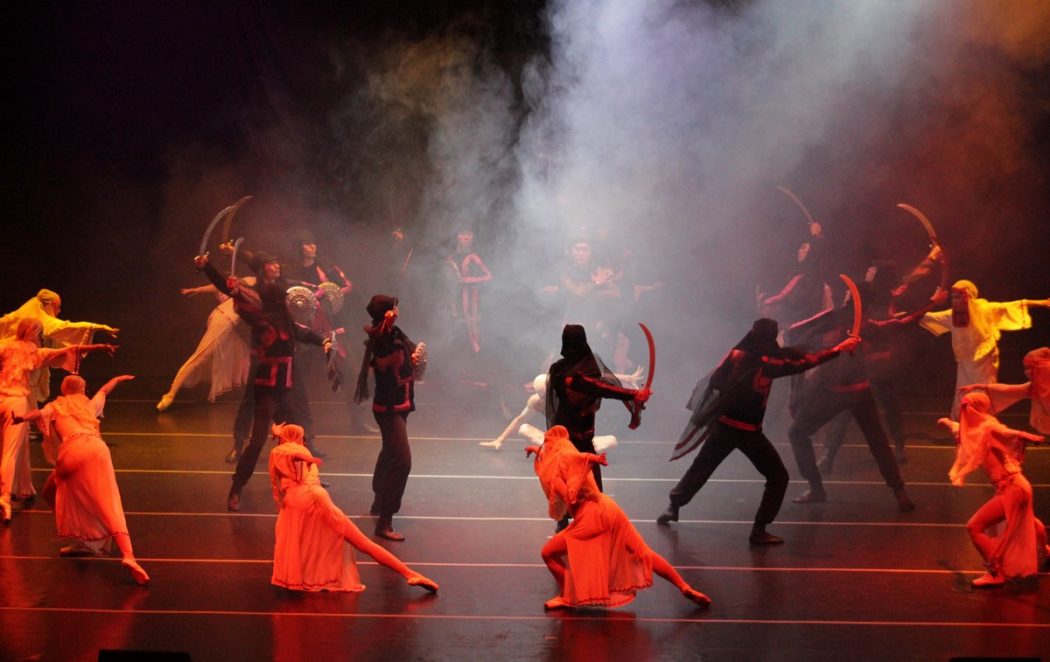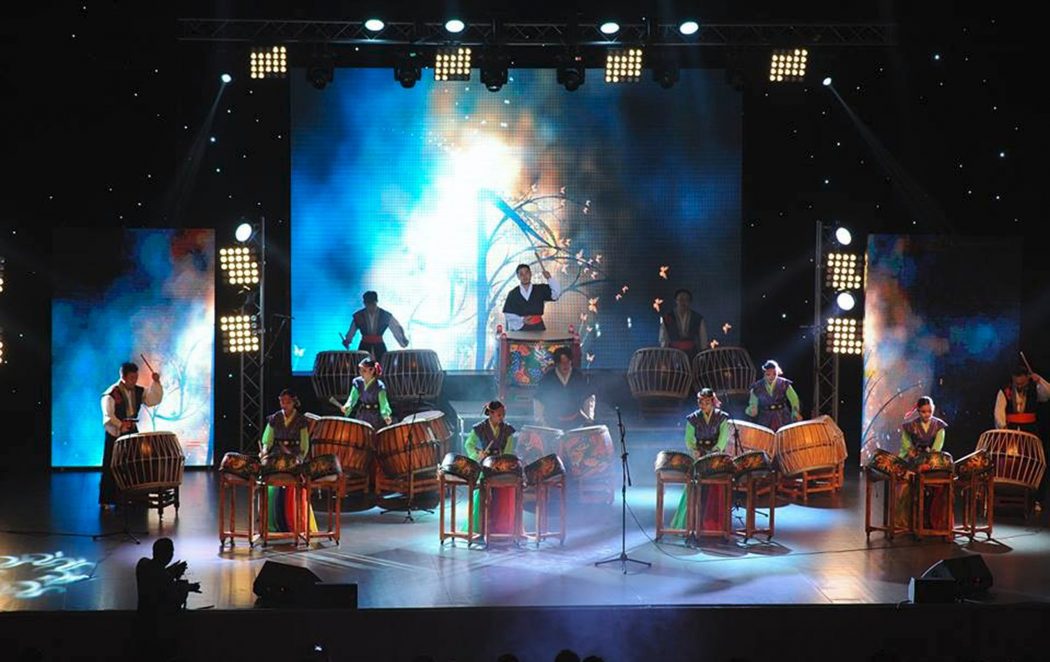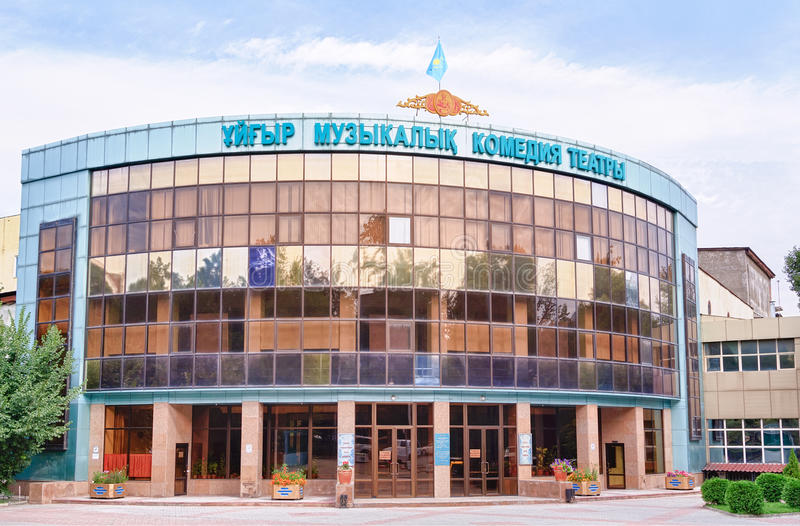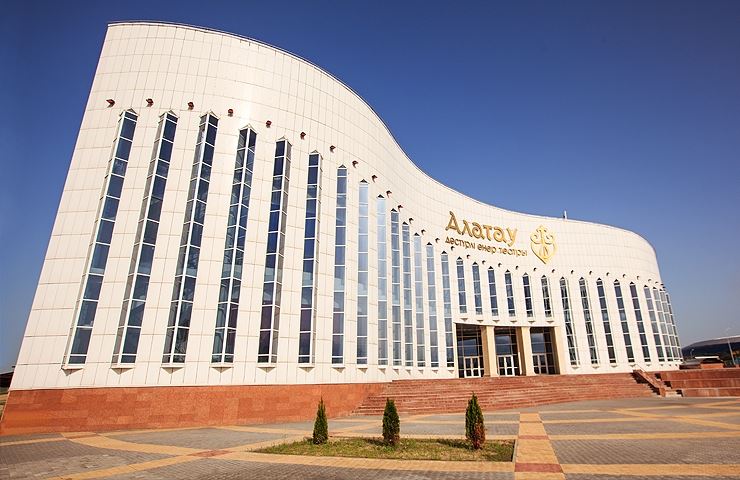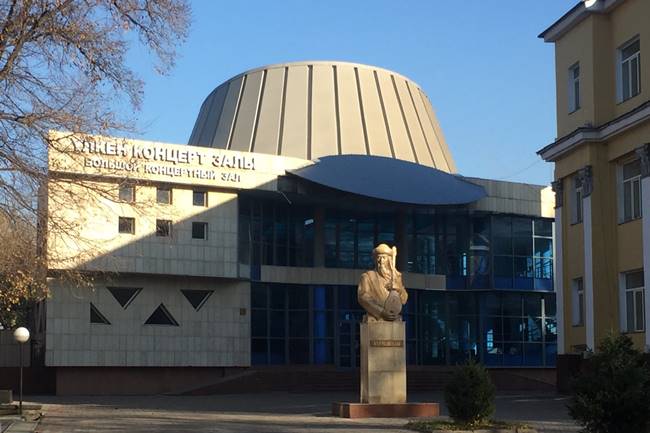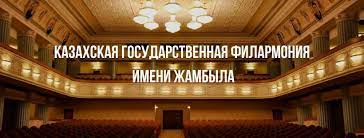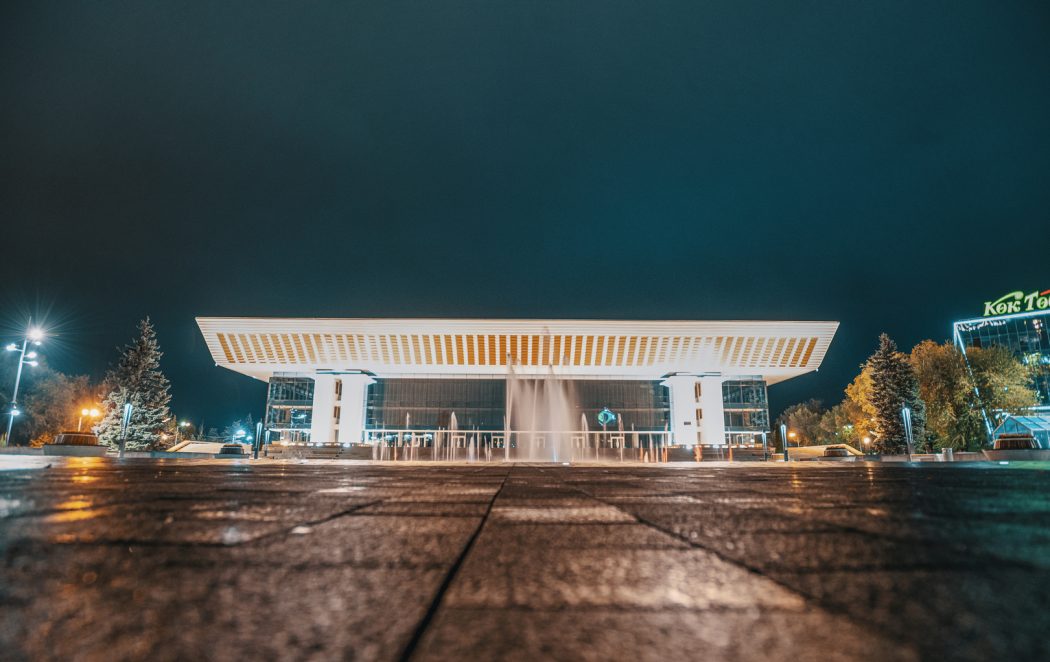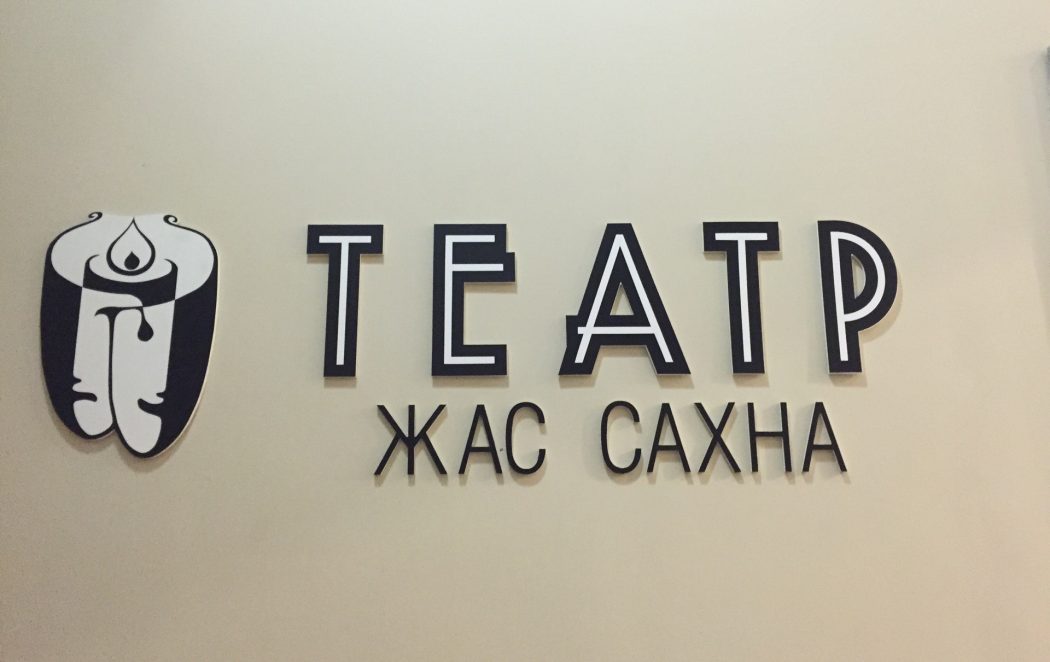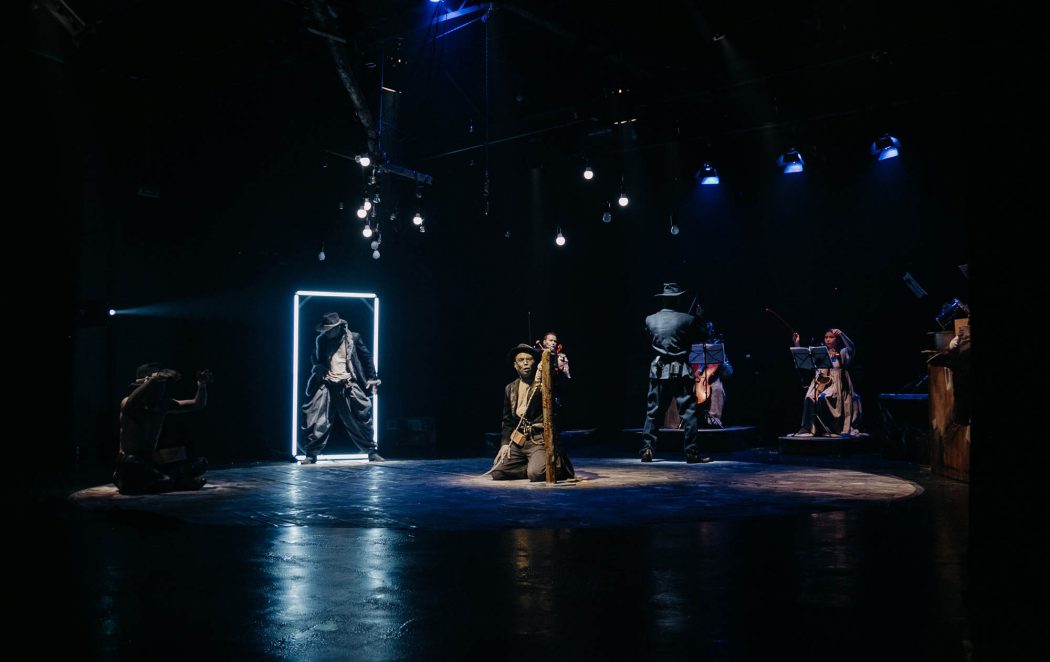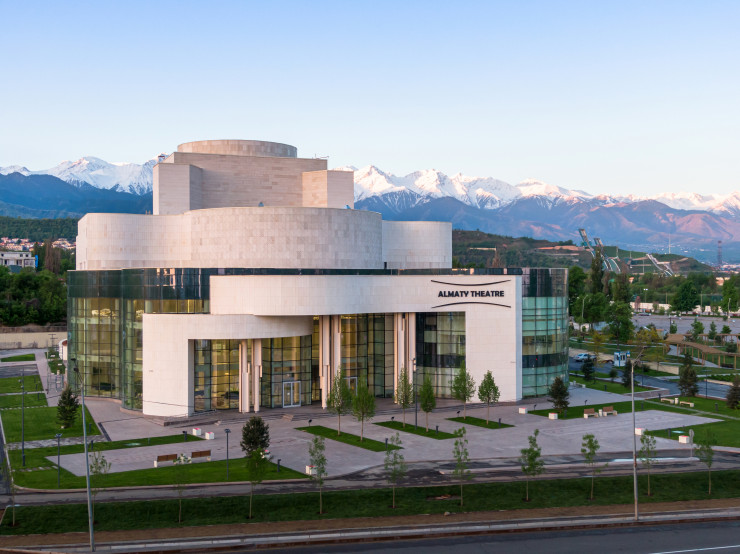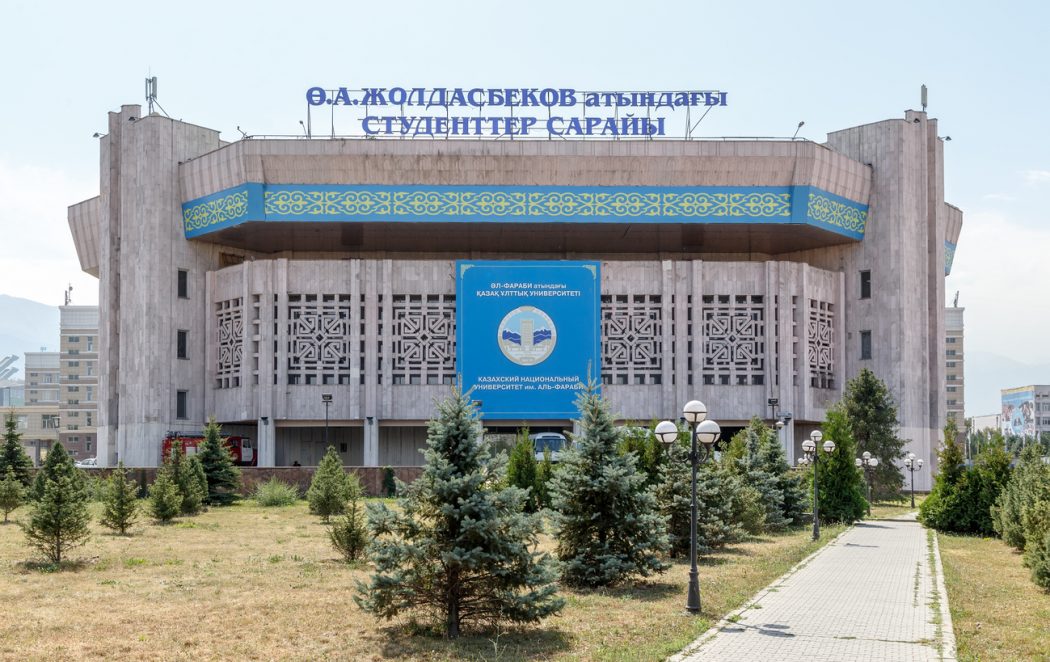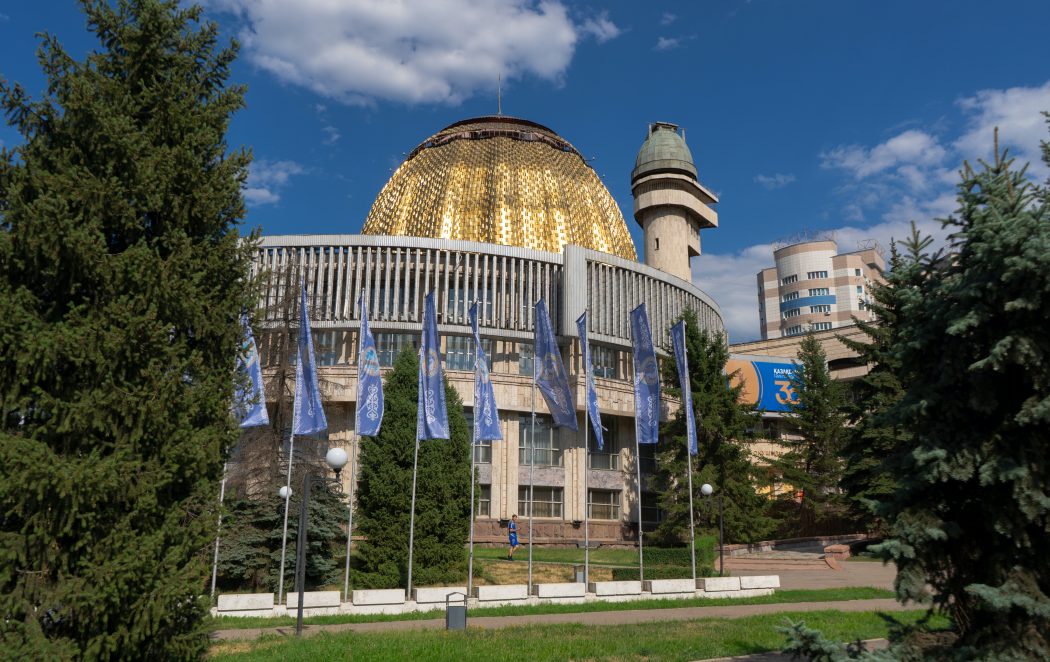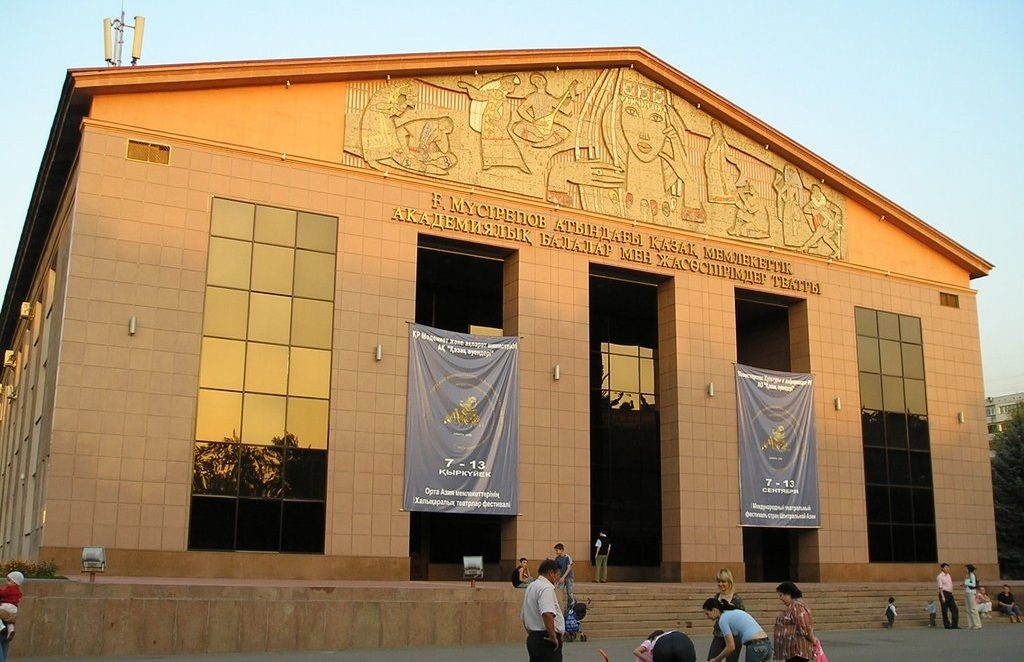Opening
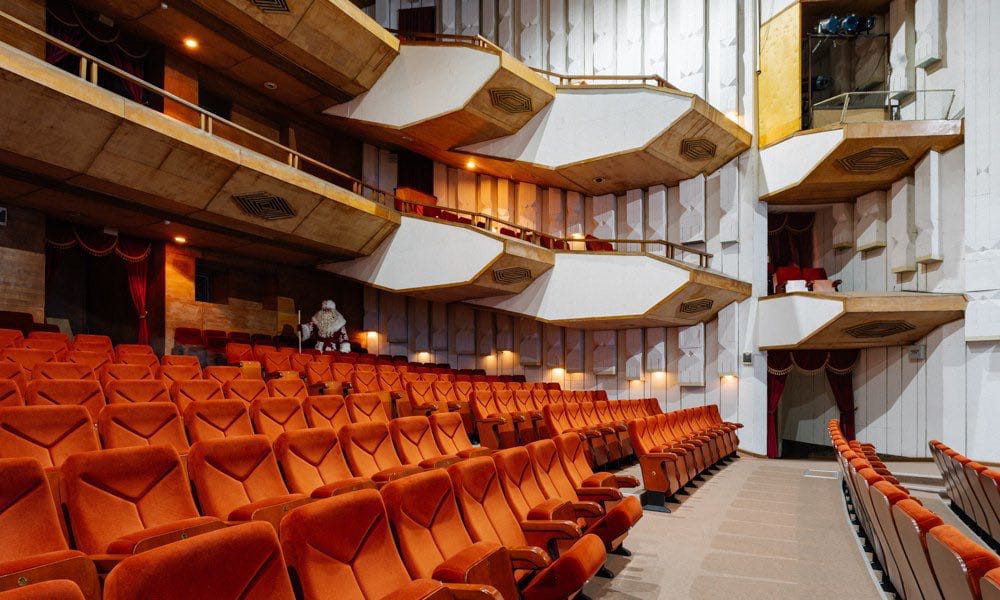
Autonomous Soviet Socialist Republic. The theater opened on January 31, 1926 with the play Altyn Sakina (The Golden Ring) directed by Serala Kozhamkulov and a big concert. However, the very first production, held on January 13, even before the official opening, was the act of the Yenlik – Kebek tragedy by Mukhtar Auezov. In 1928, with the transfer of the capital to Alma-Ata, the theater was also transferred there. Since 1937, the theater was awarded the title of academic, and since 1961 – the name of Mukhtar Auezov. In 1981, a new building was built specifically for the Kazakh drama theater on Abay Avenue. The authors of the project were architects O. Baimurzaev, A. Kainarbaev, M. Zhaksylykov with the participation of engineers M. Plahotnikov and A. Brokhovich, artists I. Nimets and G. Zavizionnogo. For this project, three authors were awarded the State Prize of the Kazakh SSR named after C. Valikhanova in 1982.
Construction of the structure
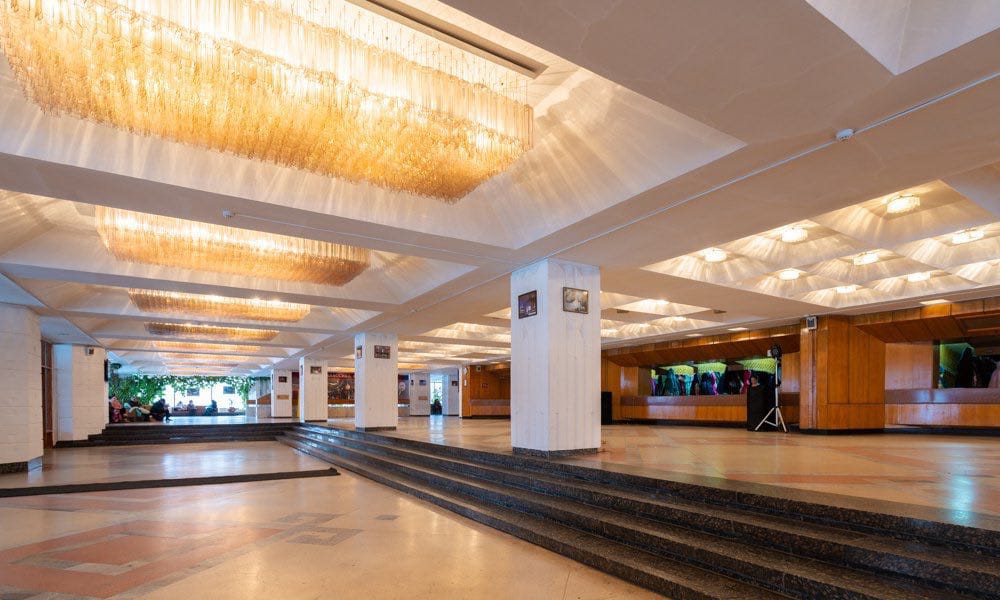
It was organized at the end of 1925 in Kyzyl-Orda, which at that time was the capital of the Kazakh Autonomous Soviet Socialist Republic. The theater opened on January 31, 1926 with the play Altyn Sakina (The Golden Ring) directed by Serala Kozhamkulov and a big concert. However, the very first production, held on January 13, even before the official opening, was the act of the Yenlik – Kebek tragedy by Mukhtar Auezov. In 1928, with the transfer of the capital to Alma-Ata, the theater was also transferred there. Since 1937, the theater was awarded the title of academic, and since 1961 – the name of Mukhtar Auezov. In 1981, a new building was built specifically for the Kazakh drama theater on Abay Avenue. The authors of the project were architects O. Baimurzaev, A. Kainarbaev, M. Zhaksylykov with the participation of engineers M. Plahotnikov and A. Brokhovich, artists I. Nimets and G. Zavizionnogo. For this project, three authors were awarded the State Prize of the Kazakh SSR named after C. Valikhanova in 1982.The building is a unique construction and architectural features. The compositional solution of all facades is based on the integrity of the main volume. The building is located on a high basement. The main entrance is indicated by a ceremonial staircase in front of which a monument to M.O. Auezov. The lobby is decorated with a decorative bas-relief. The proportionality of the volume of the building and its elements give the building a special monumentality and solemnity. In the decoration of the facades used granite, shell rock and marble. In the 1930s the theater attracts professional Russian directors (M. G. Nasonov, I. B. Borov, M. A. Sokolovsky), artists (K. Khodzhikov), sets about staging complex dramatic works: Night Peals by Auezov, Amangeldy by Mailin and Musrepov. In 1941-45s the repertoire was based on performances dedicated to the heroic struggle of the Soviet people in the Great Patriotic War: At the time of tests by Auezov, Guard of Honor by Auezov and Abishev, as well as Akan-sere – Ak tokty by Musrepov. Also, in the war years was set The Taming of the Shrew by Shakespeare.
In the postwar years, the development of socialist realism continues: Friendship and Love by Shaken Aimanov, Blossom, Steppe! by A. Tazhibaev and others.
In the 1950s and 1960s, the theater turned to historical subjects: Chokan Valikhanov by S. Mukanova, Mayra by A. Tazhibaeva.
From 1997 to 2018, on the stage of the theater, the New Year’s performance was held by the Sesame puppet theater.



